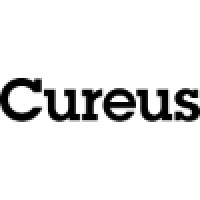 “Attenuating emesis elicited by both disease and medical treatments of disease remains a critical public health challenge.
“Attenuating emesis elicited by both disease and medical treatments of disease remains a critical public health challenge.
Although cannabinergic medications have been used in certain treatment-resistant populations, FDA-approved cannabinoid antiemetics are associated with undesirable side effects, including cognitive disruption, that limit their prescription. Previous studies have shown that a metabolically stable analog of the endocannabinoid anandamide, methanandamide (mAEA), may produce lesser cognitive disruption than that associated with the primary psychoactive constituent in cannabis, Δ9-tetrahydrocannabinol (Δ9-THC), raising the possibility that endocannabinoids may offer a therapeutic advantage over currently used medications.
The present studies were conducted to evaluate this possibility by comparing the antiemetic effects of Δ9-THC (0.032-0.1 mg/kg) and mAEA (3.2-10.0 mg/kg), against nicotine- and lithium chloride (LiCl)-induced emesis and prodromal hypersalivation in squirrel monkeys.
These studies systematically demonstrate for the first time the antiemetic effects of cannabinoid agonists in nonhuman primates. Importantly, although Δ9-THC produced superior antiemetic effects, the milder cognitive effects of mAEA demonstrated in previous studies suggests that it may provide a favorable treatment option under clinical circumstances in which antiemetic efficacy must be balanced against side-effect liability.
SIGNIFICANCE STATEMENT: Emesis has significant evolutionary value as a defense mechanism against ingested toxins; however, it is also one of the most common adverse symptoms associated with both disease and medical treatments of disease. The development of improved anti-emetic pharmacotherapies has been impeded by a paucity of animal models.
The present studies systematically demonstrate for the first time the antiemetic effects of the phytocannabinoid Δ9-tetrahydrocannabinol and endocannabinoid-analog methanandamide in nonhuman primates.”
https://pubmed.ncbi.nlm.nih.gov/32561684/
http://jpet.aspetjournals.org/content/early/2020/06/19/jpet.120.265710

 “Posttraumatic stress disorder (PTSD) is an often chronic condition for which currently available medications have limited efficacy.
“Posttraumatic stress disorder (PTSD) is an often chronic condition for which currently available medications have limited efficacy. “Painful tonic spasm (PTS) is a common yet debilitating symptom in patients with neuromyelitis optica spectrum disorder (NMOSD), especially those with longitudinally extensive transverse myelitis. Although carbamazepine is an effective treatment, it poses the risk of severe adverse reactions, such as Steven-Johnson syndrome (SJS).
“Painful tonic spasm (PTS) is a common yet debilitating symptom in patients with neuromyelitis optica spectrum disorder (NMOSD), especially those with longitudinally extensive transverse myelitis. Although carbamazepine is an effective treatment, it poses the risk of severe adverse reactions, such as Steven-Johnson syndrome (SJS). “The phosphatidylinositol 3-kinase (PI3K)/protein kinase B (PKB/Akt)/mechanistic target of rapamycin (mTOR) signaling pathway has been associated with several pathologies in the central nervous system (CNS), including epilepsy. There is evidence supporting the hypothesis that the PI3Kγ signaling pathway may mediate the powerful anticonvulsant properties associated with the cannabinoidergic system.
“The phosphatidylinositol 3-kinase (PI3K)/protein kinase B (PKB/Akt)/mechanistic target of rapamycin (mTOR) signaling pathway has been associated with several pathologies in the central nervous system (CNS), including epilepsy. There is evidence supporting the hypothesis that the PI3Kγ signaling pathway may mediate the powerful anticonvulsant properties associated with the cannabinoidergic system. “Cannabidiol (
“Cannabidiol ( “Cannabinoids are the chemical compounds with a high affinity for cannabinoid receptors affecting the central nervous system through the release of neurotransmitters. However, the current knowledge related to the role of such compounds in the regulation of cellular aging is limited. This study aimed to investigate the effect of cannabidiol and tetrahydrocannabinol on the function of aged pancreatic islets.
“Cannabinoids are the chemical compounds with a high affinity for cannabinoid receptors affecting the central nervous system through the release of neurotransmitters. However, the current knowledge related to the role of such compounds in the regulation of cellular aging is limited. This study aimed to investigate the effect of cannabidiol and tetrahydrocannabinol on the function of aged pancreatic islets. ‘T-cell acute lymphoblastic leukemia (T-ALL) is a highly heterogeneous malignant hematological disorder arising from T-cell progenitors.
‘T-cell acute lymphoblastic leukemia (T-ALL) is a highly heterogeneous malignant hematological disorder arising from T-cell progenitors. “Irritable bowel syndrome (IBS) is a frequent cause of abdominal pain and altered bowel habits, which is associated with significant healthcare utilization.
“Irritable bowel syndrome (IBS) is a frequent cause of abdominal pain and altered bowel habits, which is associated with significant healthcare utilization.